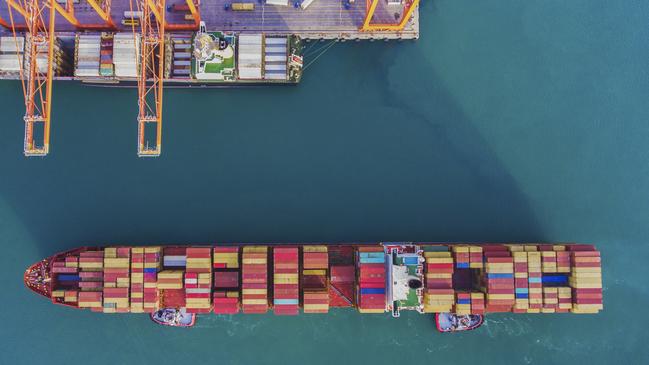Shipping price surge hitting economy, RBA says
Australian companies are facing higher shipping and shipping container prices flowing from the massive swings in consumer demand caused by COVID-19.

Strained global supply chains and the worldwide shortage of shipping containers has caused logistical headaches for Australian companies and injected higher costs into the economy, according to the Reserve Bank’s latest statement on monetary policy.
In the central bank’s quarterly update it warned Australia was not immune to the effects of very large shifts in patterns of demand which have generated supply chain bottlenecks as well as driving up prices for transport and shipping containers, although for the majority of local firms it hasn’t impacted their ability to operate.
This showed itself in product delays, initially, and now higher shipping prices are creeping into the system and could threaten some inflationary pressure.
“When China entered into lockdown in early 2020, Australian firms across many industries reported delays in deliveries of up to a few weeks and, in some cases, difficulties sourcing products, as factories overseas were either shut down or operating at significantly reduced capacity,” the RBA said.
“The difficulties around sourcing sufficient quantities of products were most pronounced for personal protective equipment (PPE) and other medical and hygiene products in high demand.
“Chinese factories started returning towards normal production over March and April. At the same time, supply chain disruptions started to emerge in other parts of Asia, the US and Europe as those economies implemented various restrictions on activity.”
Then through the later stages of 2020 the shift in consumption patterns took suppliers by surprise, and resulted in transportation issues becoming a major driver of supply chain issues, the RBA said.
Shipping prices were going up as containers were becoming harder to source.
“This primarily reflects a global shortage of shipping containers, particularly out of China, and a mismatch of the location of containers, which are often full in one direction but empty in the other.
“At various times this has been exacerbated by congestion at some ports around the world as increased import volumes have coincided with reduced capacity due to restrictions.
“The lack of shipping containers has resulted in sharp increases in global shipping prices since mid 2020, as well as delivery delays.”
The RBA showed in its statement tables that global shipping prices had risen threefold since 2019 as by the Baltic Dry Index and container pricing.
“Supply chain issues have resulted in higher costs for PPE and cleaning products, and container and airfreight costs have also increased significantly. For most firms these costs are only a small share of total costs, and may be offset by reductions in other costs.”
Its these inflated costs that Australia’s CEOs are currently fighting to contain to avoid passing on to consumers, with Wesfarmers boss Rob Scott this week highlighting the steeper shipping costs at the Macquarie Australia Conference where he said he was determined to contain the higher prices.

“The way we think about this is not just simply supply costs are going up, how much do we need to increase our prices to offset that,” Mr Scott told the investor conference.
“The focus in our businesses is how do we absorb these costs and create greater efficiencies so we don’t have to pass those costs to customers.
“Because of the significant scale in our business and our deep relationships we have with suppliers, we have more capacity to mitigate and offset some of these costs than many others.”
Kmart managing director Ian Bailey last month also picked up on the shipping and container shipping trend, telling investors for a strategy day that Kmart, which includes stablemate discount department store Target, was the biggest importer of shipping containers in Australia and was feeling the higher prices.
Mr Bailey told investors that it was becoming increasingly harder and more expensive to gain access to shipping containers to bring in goods and Kmart was now having to resort to buying container use on the spot market, which was more expensive, to keep up with demand.
“It is part of the costs of managing our cost of goods sold. We wouldn’t pass it on to customers on the way through. I don’t think pushing prices up to customers even at the moment would be an acceptable thing for them.”




To join the conversation, please log in. Don't have an account? Register
Join the conversation, you are commenting as Logout